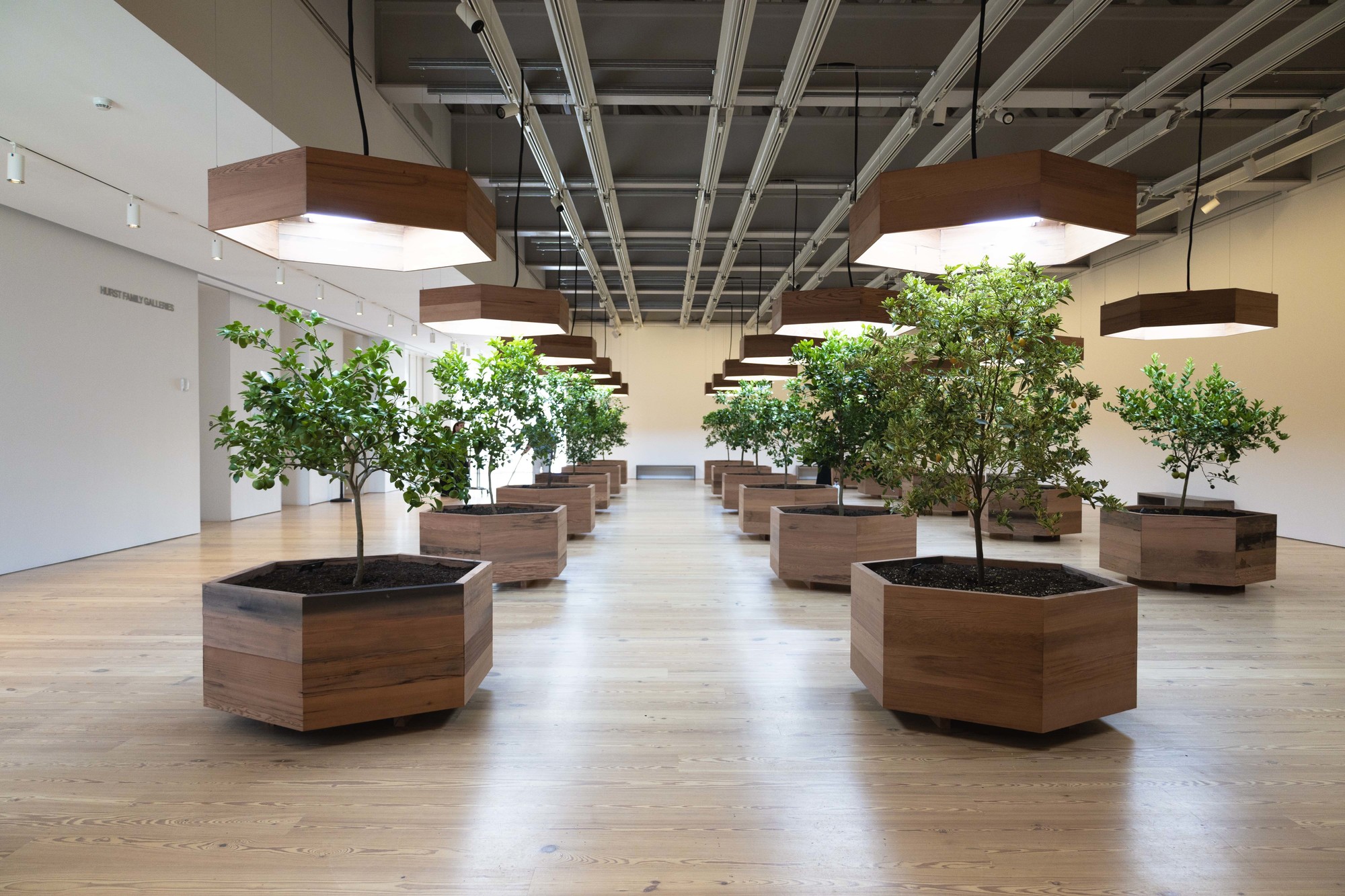A citrus grove is currently growing on the 8th Floor galleries of the Whitney Museum, but not because the museum is converting those exhibition spaces into an orchard. The flora is part of a living installation conceived of and designed in 1972 by artists Helen Mayer Harrison (1927–2018) and Newton Harrison (1932–2022) as part of their survival series. Known collectively as “The Harrison,” they were among the pioneers of the Environmental Art movement in the 1970s, making nature itself the medium that defined their practice. Existing in the space between art and activism, their works often engaged in interdisciplinary collaborations with science, opening new ways to live and work with nature.

Titled Survival Piece #5: Portable Orchard, the installation features eighteen live citrus trees rooted in individual planters with their own lighting systems. This is the first standalone museum presentation of the piece. “We were excited to think about what it would mean to bring one of the Harrisons’ Survival Pieces into the galleries today because the questions their work raised more than fifty years ago are even more urgent now,” Whitney curators Kim Conaty and Roxanne Smith told Observer.
Installing something so ordinary and natural yet so essential for survival in a museum encourages dedicated reflection on the organic processes that allow us to feed ourselves. Portable Orchard, the curators explained, “asks viewers to think about where their food comes from and what the future might look like if crops could no longer be grown outdoors due to human-made environmental distress.”
Conceived at a time when the first environmental movements were newly established, the idea of the work is grounded in the artists’ faith that museums could still serve as a platform for inspiring change, starting from a place of forced reflection. At one of the first presentations of the work, Helen Harrison said, “we are going to have to learn how to grow our own food and take care of ourselves at one point or another. We started looking at what that means.”

Making art with nature and then displaying it requires a continuous process of care. “We took that responsibility seriously when we installed these eighteen trees in our galleries, beginning with how we sourced materials, considered their lifecycles,and prepared maintenance plans to ensure we could responsibly care for the orchard,” Conaty and Smith said. “As importantly, we sought to create a beautiful, contemplative space that would allow visitors to enjoy being here, traversing the grove with surprise and delight.”
SEE ALSO: These are the Banksy Animals in London Still On View
Presenting these plants in the museum context elevates them to the status of artworks, resulting in a new level of attention from the people who would stop to contemplate and question the meaning and essence of the trees, extracted from their usual context and brought imto an institutional setting where they can be ephemeral monuments to the lifecycles constantly unfolding around us and vital for our collective survival. According to the curators, “visitors often take them in slowly and thoughtfully, noticing the differences between varieties, paying attention to the fruiting cycles and literally stopping to smell the flowers.”

Since its unveiling at the end of June, the installation has been a catalyst for educational workshops and discussions, with family programming, community engagements and conversations around climate action. Ultimately, this eco installation offers a meaningful way to contemplate and then reconsider not only the presence but also the essence of the plants that surround us and are beautiful and essential companions that contribute to our existence, encouraging us to reconsider the sustainability of our choices.
Survival Piece #5: Portable Orchard is on view at the Whitney Museum of American Art in New York through January 1, 2025.
